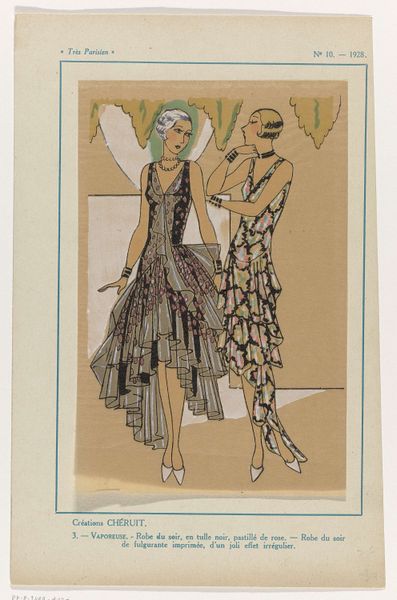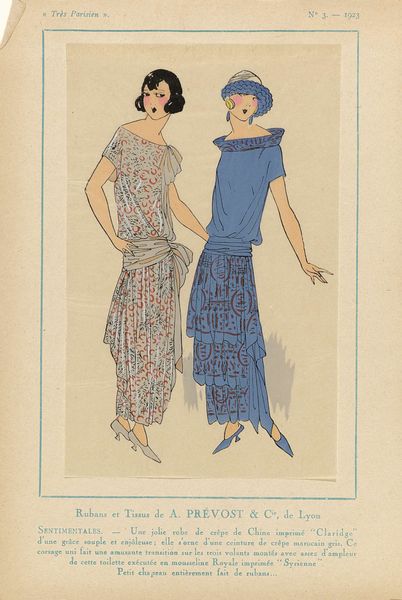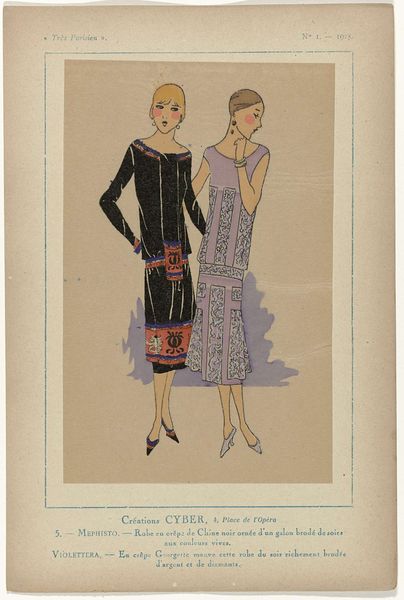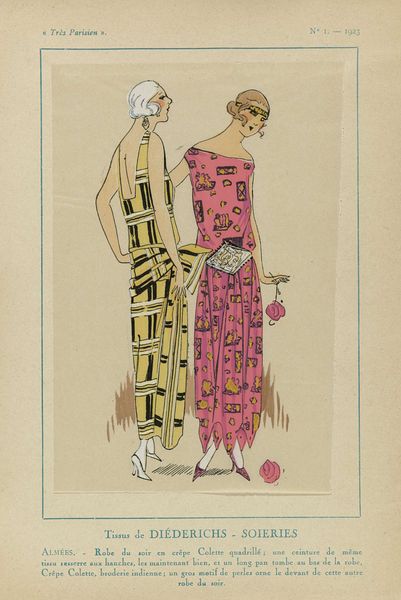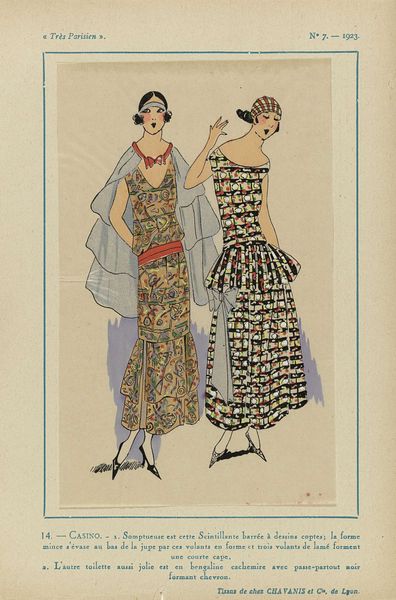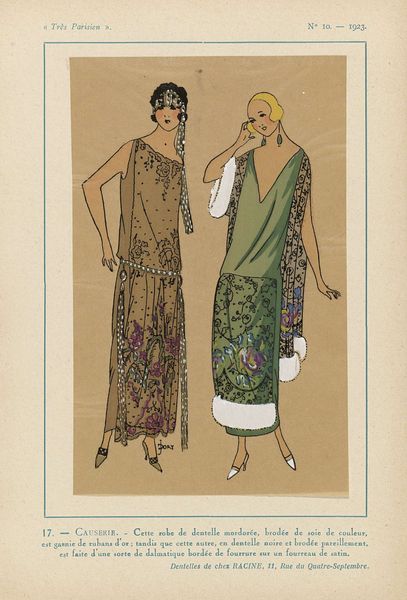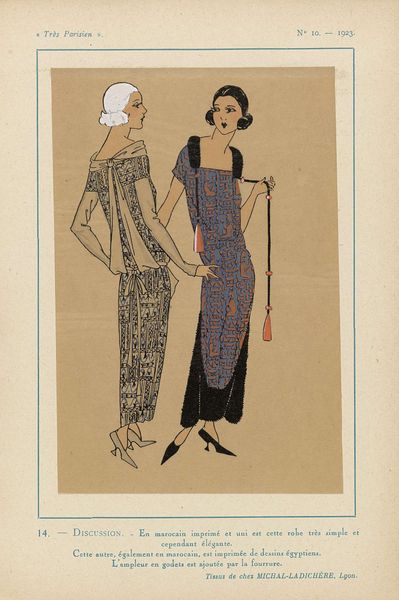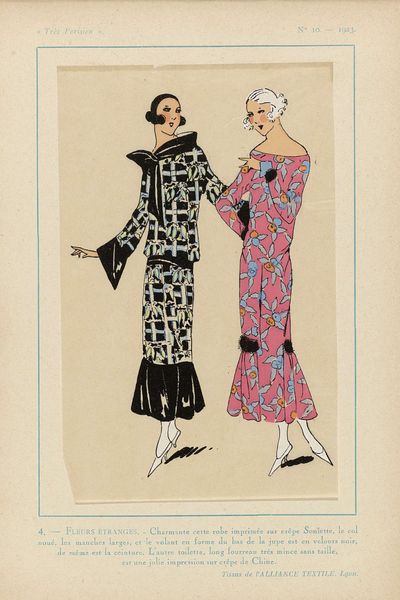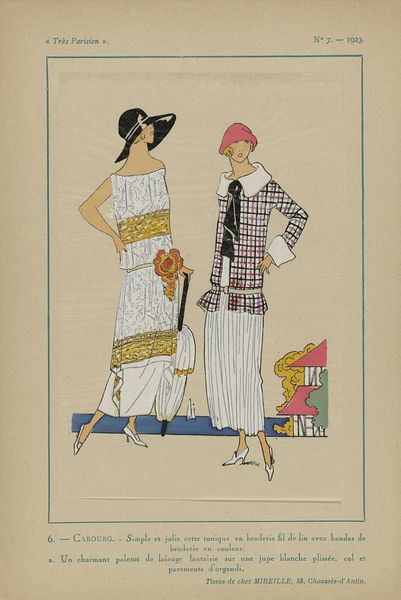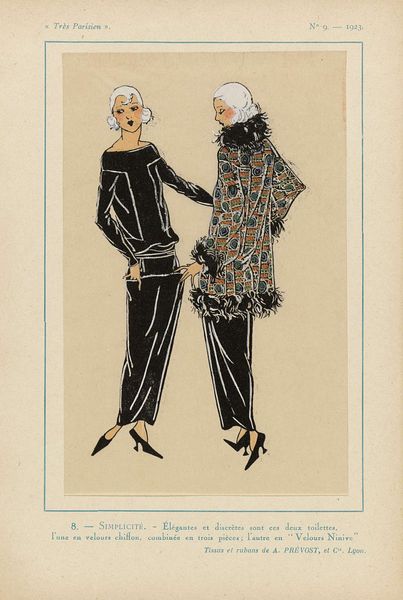
Dimensions: height 269 mm, width 180 mm
Copyright: Rijks Museum: Open Domain
Curator: Here we have “Très Parisien, 1923, No. 3: Créations ROBERT...Diablesse,” a print made with ink and watercolor, created by J. Dory. I find its Art Nouveau style absolutely charming. What captures your attention? Editor: I’m immediately drawn to the sense of effortless chic; it’s got a confident, almost mischievous vibe. Like, "Yes, I'm impossibly stylish, and I know it." The graphic quality is really strong too, that confident line work just pops. Curator: That confidence reflects the societal shifts of the era. Fashion plates like this showcased not just clothing, but a new vision of women. Notice how the name “Diablesse” suggests a playful rebelliousness, embracing a departure from more rigid social norms. These images often functioned as aspirational symbols, contributing to a shifting collective identity. Editor: Diablesse… devil woman! I love that it embraces a certain… boldness. The juxtaposition of that flowing black dress with all the tassels alongside the linear pleats of the cape is masterful. The whole composition crackles with energy; they’re modern women ready to take on the world. Do you think that was the artist’s intention, to depict a sense of taking power? Curator: Undoubtedly. This period witnessed women demanding more freedom and agency. Fashion was a tool to express that liberation. The styles showcased in this print reject Victorian stuffiness for looser silhouettes and more daring designs. The choice of watercolor adds a certain delicacy, while the precise ink work anchors the images. The interplay speaks to a blend of tradition and modernity. The image works as a powerful signifier of social transformation through aesthetic innovation. Editor: It's amazing how much social context you can unpack from a seemingly simple fashion illustration. It goes beyond pretty dresses. It becomes about how women wanted to present themselves and interact with the world! These women would enter the scene with total confidence in who they are. Curator: Precisely. Examining the visual language used allows us to glean deeper insights into the psychology and aspirations of the era. We see more than garments; we see a reflection of cultural desires. Editor: Agreed! It is an emblem of the era—stylish and so smart.
Comments
No comments
Be the first to comment and join the conversation on the ultimate creative platform.

